Traveling to see art is more than a pleasant variation in the academic year. It is an
inevitable part of study. After all, even
FIELD TRIPS

ARMENIA & GEORGIA
January 2023
After the first half of the semester and countless days spent studying in the library, we were looking forward to an excursion that awaited us. We were about to visit two eastern countries located on the Silkroad intersection – Armenia, and Georgia.
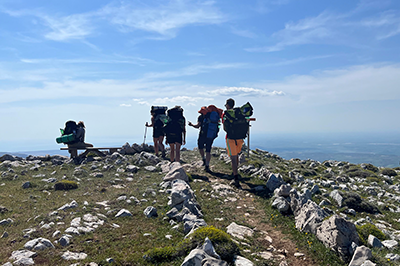
SALERNO – GARGANO
May 2022
On that Friday in April, nothing seemed to be working as planned...

SICILY
March 2022
As soon as the spring semester started, we took the benefit of the March days getting slowly yet steadily longer for our next field trip, this time to Sicily.

ISTANBUL
February 2022
As a reward after a difficult exam period, we were eagerly looking forward to our tour of Christian art in Constantinople.
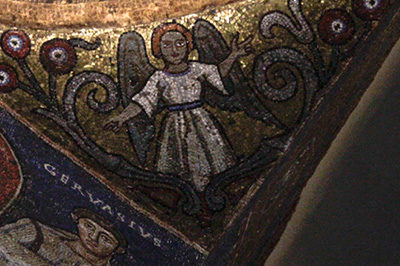
MILAN
November 2021
Milan is among the most often mentioned cities in our lectures about medieval art. That is why I was extremely happy when I finally got the chance to see it. In November 2021, our group of almost twenty students departed on the night train from Vienna.
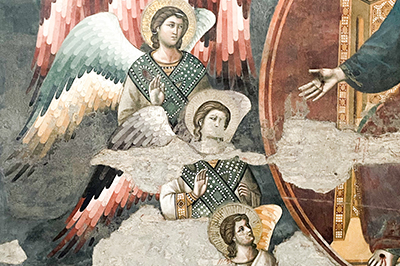
ROME
Summer 2021
It was difficult, and even sad, to finish our first year without getting to know classmates and without the opportunity of experiencing and sharing ours studies with others. So the offer of an excursion to Rome at the end of summer was not only a welcome addition to the summer holidays, but also an opportunity for us to finally step out from behind our computers and get to know each other in person.
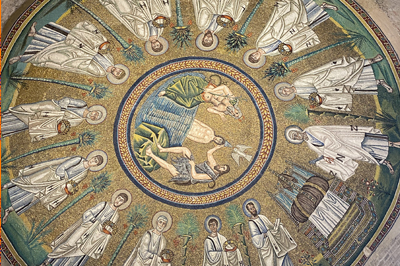
RAVENNA
Summer 2021
After a long break because of COVID, the Center for Early Medieval Studies finally took off on a study trip to Ravenna. It wasn’t the Center’s first trip to Ravenna, but it was the first experience with this city for most of the participants. After spending the night on the train from Vienna, we arrived at the railway station in Brescia, where we were supposed to change trains for Ravenna.
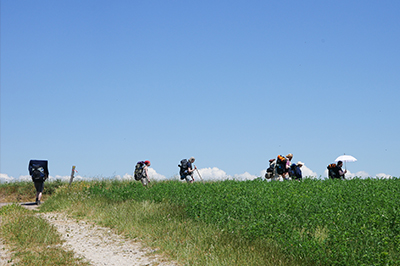
CAHORS—CONQUES
June 2021
We spent the end of the 2020/2021 academic year marching through southern France. Our route led from the town of Cahors, along the river and over low hills, all the way to Conques. We have thus renewed the enduring tradition of contemplating the sights through the eyes of pilgrims.
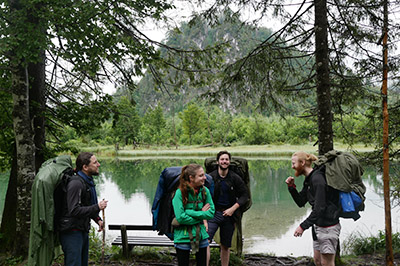
LAMBACH — MARIA WÖRTH
July 2020
***

GEORGIA & ARMENIA
November/December 2019
As the winter arrived, few members of the Masaryk University Department of Art
History accompanied by some exchange students,
took off on
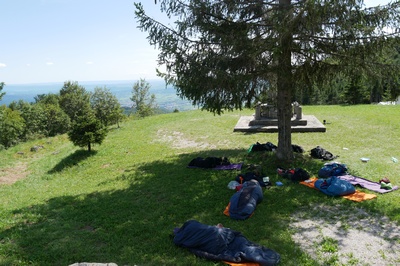
GRADO — BORGO LUSSARI
August 2019
Like any annual Summer Walks organised by the Centre for Early Medieval Studies, it is once again in small groups that we set out on our, at least for me, unexpected journey. Following the official Cammino Celeste, going from Grado to the Monte Lussari, we began our adventure…
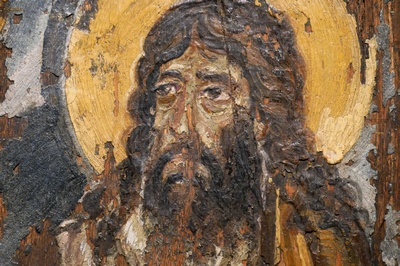
KIEV & ODESSA
June 2019
Our June field trip to Ukraine began with a night arrival to its capital city Kiev. The first day was mainly devoted to visiting some of the local museums. First, we have visited the Khanenko Museum of Arts. The pleasant, almost homely atmosphere of this museum, which originally contained a private art collection of the Khanenko family, revealed a number of rooms with artifacts from…

ISTANBUL
February 2019
The February trip to Istanbul I'm about to describe was, as it was for most participants, our first excursion with Brno's Department of Art History. That's why we got on the plane in Vienna with a rather unclear vision of what awaited us, full of concern about the suitability of our footwear – multiple warnings that “we are going to walk a lot” left their mark. Just a few hours later, we had already landed in Turkey…
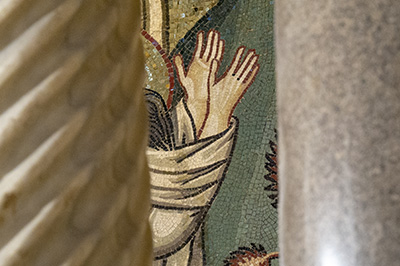
SICILY
November 2018
Sicily, a place of indescribable atmosphere where the cultures of Islam, Judaism, and Christianity have been meeting over the centuries, gave rise to an abundance of extraordinary works of art. It was precisely for this reason that we, group from the Brno Department of Art History, decided to visit this island again after four years. The program of this year's trip did not change much in comparison to the last visit, yet, it has been a completely new experience for most of us.
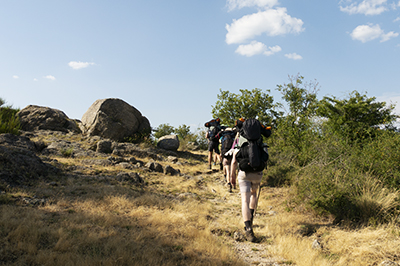
ARLES—CONQUES
July–August 2018
This report would normally start with the phrase: "Our traditional summer walk".
However, I have to say that it will not be the case of this particular
report.
Although this summer walk can have been ordinary and traditional for a lot
of my

ARMENIA
May 2018
Anyone who has participated in previous trips will probably understand the feelings we experienced before our departure, the same for whoever is preparing for an experience of this magnitude for the first time.
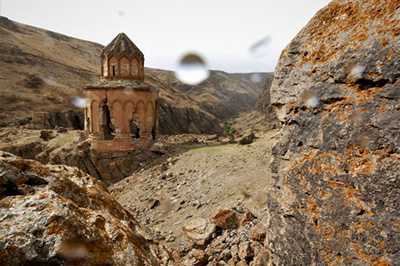
TURKEY
October 2017
Obviously, the breadth of the artistic production of medieval Armenia could not be covered by a single visit. And so, after a year of waiting, we set up a new target for our next field trip in the region - the part of the medieval Armenian kingdom which has become known as East and Southeast Anatolia in the contemporary geographical lore; in other words, regions lying within the current Turkish territory.
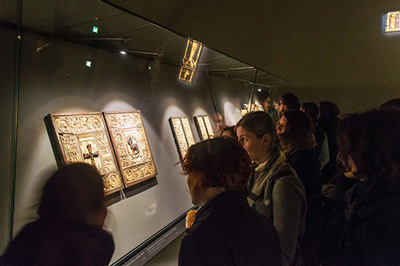
MILAN AND SURROUNDINGS
January 2017
Our trip to Milan started in Vienna on 10th January 2017. We spent the time on the train having pleasant and informative chats, taking a nap and playing games (e.g. some of us took a chance to enjoy a snowball fight due to the heavy snow fall at the station in Salzburg). After coming to the metropolis of Lombardy we took lodgings, and then we set off to explore the neighbourhood.
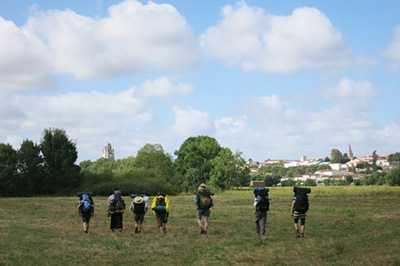
VIA TURONENSIS
August 2016
This year the traditional walking expedition exploring medieval monuments started in the French city of Poitiers where it symbolically followed up on the end of the last expedition. In contrast to the four previous expeditions this one took a completely new direction, though. It followed the ancient pilgrim route called Via Turonensis crossing the city of Tours after which it was named.
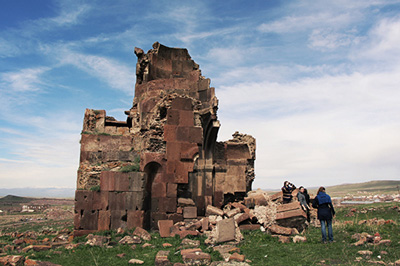
ARMENIA
April 2016
The main focus for the year 2015 was travelling about Georgia which implied the next direction of our field of interest whose principal subject includes studies of Caucasian art. Another step on this way was the visit to Armenia where we travelled through a considerable part of this country within a week. The main goal of the whole excursion were architectural monuments dating back to the times between 7th and 13th centuries.

ROME
January 2016
On one Saturday evening in January a group of Art History students left the cold Bratislava airport for a little bit warmer embrace of Rome. For some of us it was the first excursion and moments of excitement switched to enthusiastic study of essays. After stumbling through the night city into the cosy rooms of Nepomucenum, we looked forward to the next day and exciting experiences.
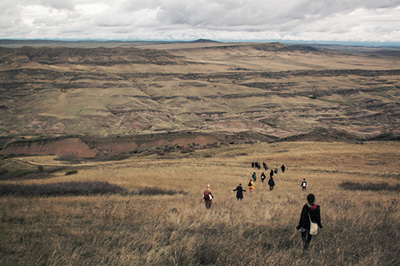
GEORGIA
October 2015
Hardly any of the twenty participants imagined the October excursion to Georgia as being a peaceful and restful experience. An enormously adventurous nature of this trip must have surprised even the most hard-bitten of us. As if the night flight from Budapest to Kutaisi itself, which was accompanied by strong turbulences, had been an omen for the really “turbulent“ and exhausting experiences of the following week.
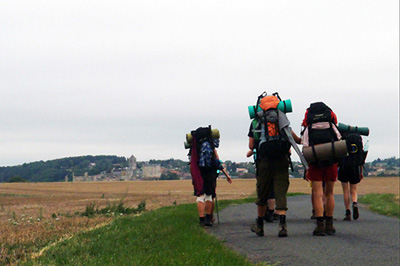
AUTUN—POITIERS
August 2015
In August 2015 we we took part in the fourth expedition of our Centre already. This form of a summer excursion allowing to experience an important view of a medieval pilgrim is gradually becoming an inseparable part and also a way of finishing the school year. The route of this year’s expedition focused on France again, it was shifted a little bit northwards and connected the Burgundy town of Autun with Poitiers.
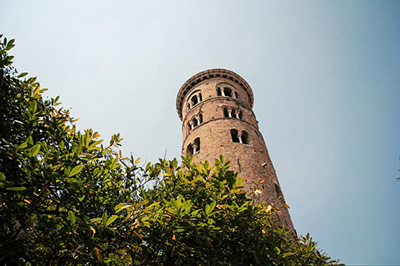
RAVENNA
June 2015
Who wouldn't want to see Ravenna? Everyone! And most of all, probably, Teodora, who actually wrote an email to Zuzana informing her that she is about the sign up for the Ravenna field trip. A field trip which had not come into being; but after all, why not go? And so it happened that a group of 12 people met at the Vienna train station on June 10th, and they set out on a quest for beauty and knowledge.
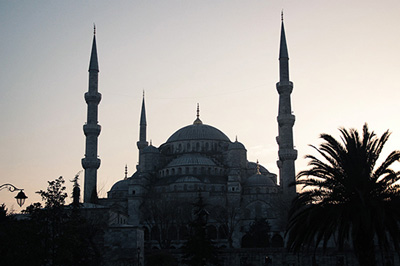
CONSTANTINOPLE
January 2015
On Sunday, January 18th, a party of 24 members met at the airport in Vienna, so that they could together start the year of 2015 with a field trip to Constantinople. The aircraft landed at the Sabiha Gökçen airport located in the Asian part of the metropolis of Istanbul during the afternoon hours, after which the party travelled directly to their hotel without any hindrance.
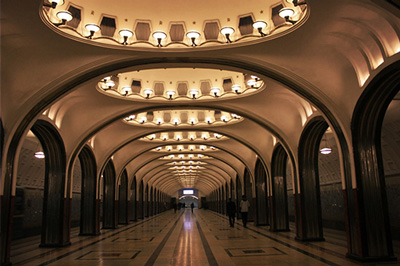
MOSCOW & NOVGOROD
October 2014
The purpose of the following text is to depict our art historian pilgrimage towards the art of Russia. And although it could seem that our goal would only be to see the results of its relationship with the Byzantine, it would be a wrong presumption. The everlasting dialogue between the old and the new, which we could see at, let's say, almost every corner, strongly affected our aestethic perceptions.

ALBENGA—ARLES
August 2014
The second half of August 2014 had been devoted to a pilgrimage across northern Italy and southern France. Our journey lead literally from one valley to another, along the horizons of Liguria and over the dust plains of Provence.
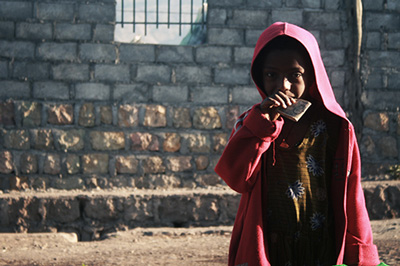
ETHIOPIA
February-March 2014
At the end of the autumn semester of 2014 (February 17th - March 17th), I set out for a study trip across northern Ethiopia, together with my colleagues Ondřej Hnilica and Matěj Mikloš. The first of the major stops along the journey was the country's capital, Addis Abeba (which translates as A New Flower). Here, our goal was to visit the university library, Goethe institut a Le Centre français des études éthiopiennes (CFEE).
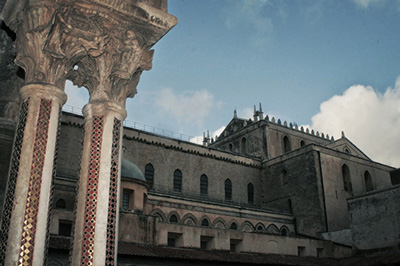
SICILY
April 2014
In the spring semester of 2014, our journey led to Sicily. The first unusual fact about this field trip turned out to be the diverse composition of its participants. From Brno (Masaryk University), there were a few so far unknown faces of first and second-year students; in addition, there came three students from Lausanne. In the course of the six days of the trip, we had the opportunity to see a number of monuments in Palermo and its surroundings.

ROME
February 2014
At the beginning of February, we set off on a quest for art and adventure to Rome. For all of us, it was the very first field trip under the lead of Ivan Foletti, who decided to only take BA students this time. Apart from Zuzana Frantová, who also joined in, there were 13 courageous women from the first and second year, as well as one blonde girl from the third year of study.
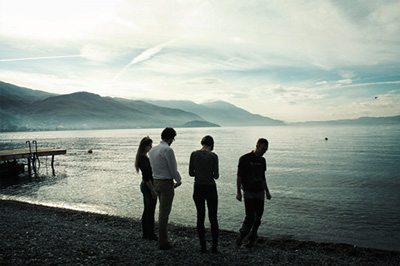
THE BALKANS
November 2013
In the autumn semester of 2013, we set off for the Balkans again. This time, there were 18 of us, in two cars Ford Transit. The first major stop was the Macedonian city of Ohrid, in which we visited several churches, and started to put together a picture of the local art from the 5th to the 15th century.
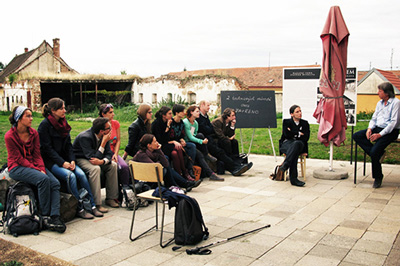
ZNOJMO
September 2013
As a historic - in fact a medieval - city, Znojmo offers a number of topics for art historians/medievalists, on which they could verify the capacity of established opinions, theories, and methodologies.
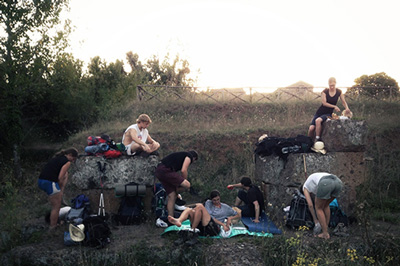
ASSISI—ROME
August 2013
Similar to the previous year, the 2013 field trip to Italy comprised of two groups of participants: the group from Université de Lausanne, which apart from Sandrine and Laïne was also appended by Adrien this year; and the group from Brno from Masaryk University, which was appended by Maťo and Zuzka. There is perhaps no need to introduce the rest of the participants, still they were the two so-called "giraffes" Betty and Schallo, the Foletti family - the leader of the trip, Ivan Foletti, with his wife Karolina - and myself, Ivana.
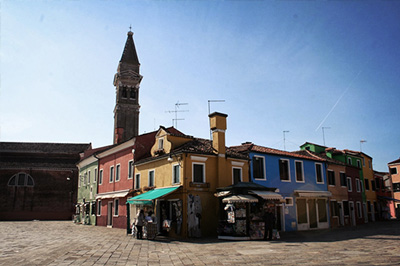
VENICE & PADUA
April 2013
In line with the motto of Mr. Foletti – at least one field trip a semester – we set off for Venice and Padua during the spring term. Early morning on Friday, Francesco Lovino, a fellow art historian from the Padua university, picked us up at the Venice train station of Santa Lucia. He then guided us during the whole of our stay in Venice.
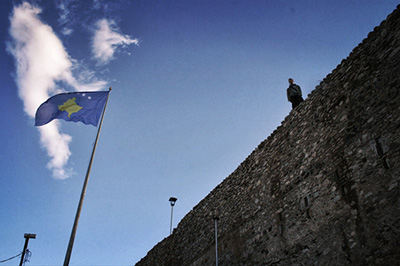
THE BALKANS
October 2012
In the autumn of 2012, we set out for the south again; this time, though, we headed a little more to the east - across Serbia, Kosovo, and Macedonia. These countries used to be a part of the Byzantine empire, and even after its collapse, they went through an interesting artistic development. Running this semester, there was a specialized seminar devoted to Byzantine art on the Balkans anyway, so we decided we complete the study directly in the field, by means of a 5-day-long car trip.
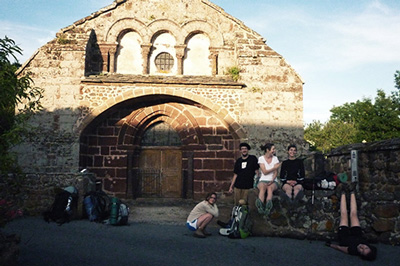
FRANCE
June 2012
The academic year of 2011/2012 was rounded up by one of the greatest phenomenons of medieval Europe: the pilgrimage to Santiago de Compostela. Our goal, however, was not its final destination at the tomb of St. Jacob in the northwest of Spain, but just a part of the pilgrimage route running through southern France, on which there are situated several major pilgrimage churches, mainly from the 12th century.
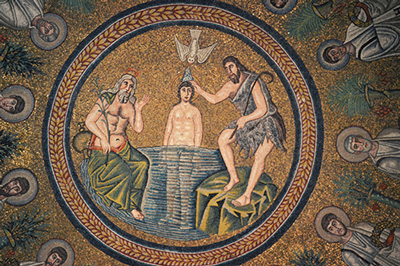
RAVENNA
May 2012
At the end of May 2012, the team of Středověc Jinax joined the field trip to Italy, lead by Jiří Kroupa and Ondřej Jakubec. We spent one intense and unforgetable day in the northern Italian city of Ravenna. Out of the desire to get to know the most notable monuments of the 5th and 6th centuries, some of us didn't even hesitate to use such adventurous means of transport as hitch-hiking.
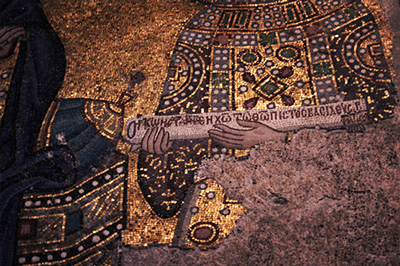
CONSTANTINOPLE
March 2012
In was in March of 2012 that we set out for our study trip to Istanbul. Still on the plane, we started to count the number of mosques together with their minarets, as many of these in fact were originally built as Byzantine churches. And such churches specifically were the hotspots of our journey. For everybody, the necessity, but also pleasure meant almost a whole day spent inside the largest of the Byzantine temples, in Hagia Sofia. After a moment of silent awe in view of its magnificence, we started with our papers, which we are required to prepare in advance to be able to take part in any of our field trips.
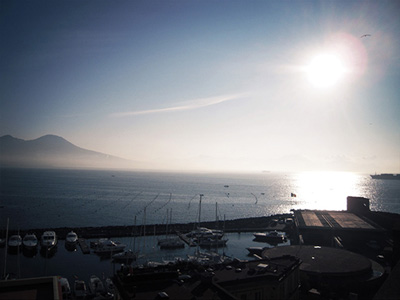
NAPLES
November 2011
At the end of November 2011, we set out from the cloudy city of Brno towards the sunny south again. Naples, the regional capital of south Italy, became the goal of our second-ever field trip. In the city under Mount Vesuvius, we spent several days meeting with monuments dating from Antiquity up to Baroque. Still, it was due to its lively atmosphere, ever changing its rythm from the main street to the remote alleys of the Spanish quarters, that Naples really enchanted us all.

MILAN
May 2011
As a part of the course named In the Brand of Ambrose: Milan and Lombardy in the Early Middle Ages, we set out for our very first field trip at the beginning of May, 2011. It was during the era of bishop Ambrose (4th century) that the city of Milan, located at the crossroads of the major routes running east-west and north-south from the Balkans to Galia, as well from Africa and Rome to the Alpine regions, became the main seat of power of the Empire, within the western half of orbis romanus.